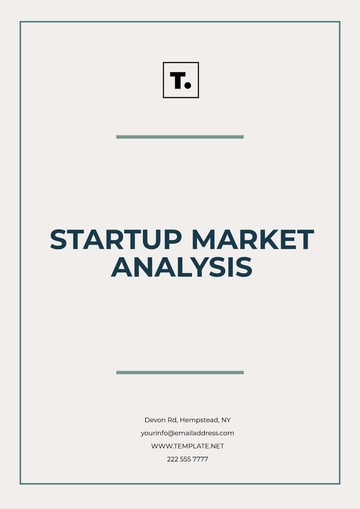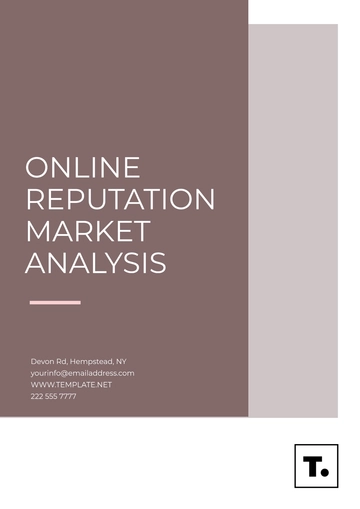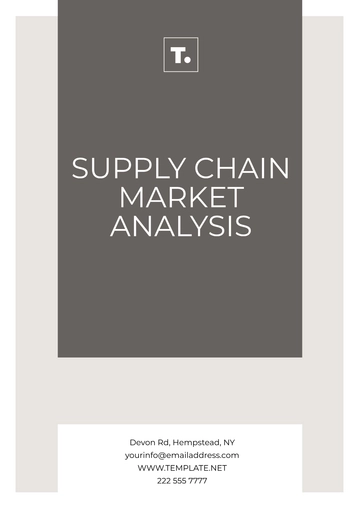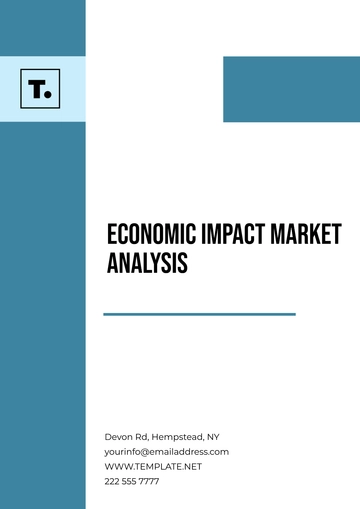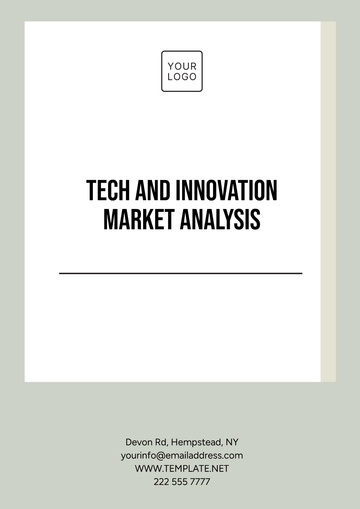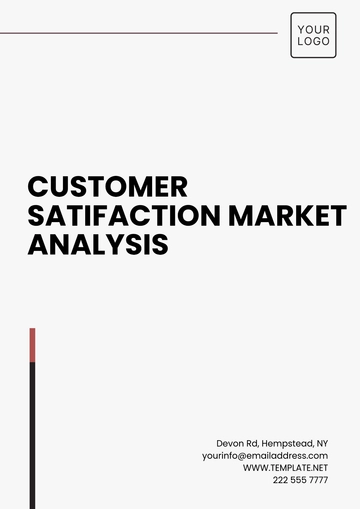Free Agriculture Market Analysis Report
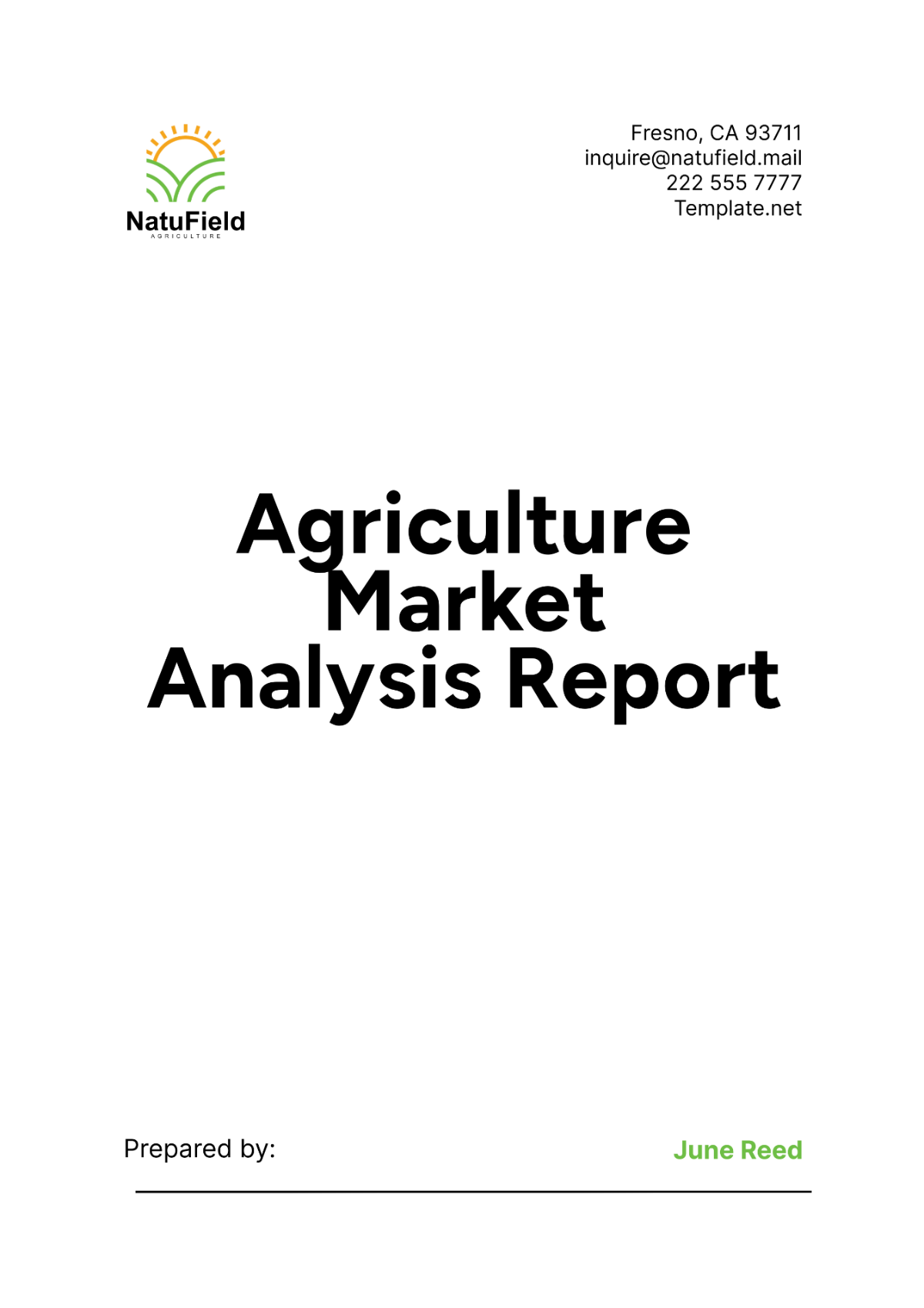
I. Introduction
A. Objectives
Market Understanding: The primary objective of this report is to provide a comprehensive analysis of the agriculture market for the year 2055. This includes understanding current market trends, consumer behavior, and competitive landscape.
Strategic Planning: The insights gathered will aid in formulating strategic plans to enhance market presence, optimize operations, and capitalize on emerging opportunities.
Risk Management: Identifying potential risks and challenges in the market to develop effective mitigation strategies.
B. Scope
Market Trends: Analysis of key market trends, including technological advancements, regulatory changes, and consumer preferences.
Competitive Analysis: Evaluation of major competitors in the agriculture sector and their market strategies.
Consumer Insights: Understanding consumer needs, preferences, and purchasing behaviors.
Financial Performance: Examination of financial performance indicators and their implications on market positioning.
II. Market Trends Analysis
The following chart and table summarize the key market trends in the agriculture sector for 2055:
No. | Trend | Impact | Growth Potential |
|---|---|---|---|
1 | Precision Agriculture | 15% | 20% |
2 | Organic Farming | 10% | 15% |
3 | Vertical Farming | 8% | 12% |
4 | Climate-Resilient Crops | 12% | 18% |
5 | Agri-Tech Innovations | 20% | 25% |
A. Precision Agriculture
Impact: Precision agriculture has a 15% impact on the market, driven by advancements in technology such as GPS and IoT. This trend is enhancing productivity and reducing waste.
Growth Potential: With a 20% growth potential, precision agriculture is expected to become more prevalent as farmers seek to optimize their operations and improve yield efficiency.
B. Organic Farming
Impact: Organic farming contributes to 10% of the market impact. The increasing demand for organic produce reflects a shift towards healthier and environmentally friendly options.
Growth Potential: The growth potential stands at 15%, fueled by consumer preferences for organic products and sustainable farming practices.
C. Vertical Farming
Impact: Vertical farming has an 8% impact on the market, offering a solution to land scarcity and urbanization challenges. It allows for high-density crop production in controlled environments.
Growth Potential: The growth potential is 12%, with innovations in hydroponics and LED lighting driving efficiency and scalability.
D. Climate-Resilient Crops
Impact: Climate-resilient crops have a 12% impact, addressing the challenges posed by climate change. These crops are engineered to withstand extreme weather conditions.
Growth Potential: With an 18% growth potential, the development and adoption of these crops are crucial for ensuring food security in the face of climate change.
E. Agri-Tech Innovations
Impact: Agri-tech innovations have the highest impact at 20%. These include advancements in biotechnology, automation, and data analytics, transforming agricultural practices.
Growth Potential: The growth potential is 25%, with continuous investments and research in agri-tech driving significant market advancements.
The agriculture market is undergoing significant transformation driven by technological advancements and changing consumer preferences. Precision agriculture and agri-tech innovations are leading the way, offering substantial growth opportunities. Organic and vertical farming are also gaining traction, reflecting a shift towards sustainability and efficiency. Climate-resilient crops are essential in addressing environmental challenges, ensuring the long-term viability of agriculture.
III. Competitive Analysis
The following table provides an overview of the major competitors in the agriculture sector for 2055:
No. | Competitor Name | Market Share | Key Strengths |
|---|---|---|---|
1 | Agro Tech | 25% | Advanced agri-tech innovations |
2 | Green Fields | 20% | Strong presence in organic farming |
3 | Urban Grow | 15% | Expertise in vertical farming |
4 | Bio Crop | 18% | Leading in climate-resilient crops |
A. Agro Tech
Market Share: Agro Techholds a 25% market share, making it the leading competitor in the agriculture sector. Their strength lies in their cutting-edge agri-tech innovations.
Key Strengths: The company's investment in R&D has led to breakthroughs in biotechnology and automation, setting them apart from competitors.
B. Green Fields
Market Share: With a 20% market share, Green Fields is a major player in the organic farming segment. Their commitment to sustainable farming practices resonates with consumers.
Key Strengths: The company’s strong brand presence and loyal customer base are significant advantages, coupled with their extensive organic product line.
C. Urban Grow
Market Share: Urban Grow holds a 15% market share, specializing in vertical farming. Their innovative approach addresses urbanization challenges.
Key Strengths: Expertise in hydroponics and efficient use of urban spaces for farming are key strengths, positioning them as leaders in vertical farming.
D. Bio Crop
Market Share: Bio Crop has an 18% market share, focusing on the development of climate-resilient crops. Their products are essential in mitigating the impacts of climate change.
Key Strengths: Advanced research capabilities and a robust product portfolio of resilient crops make them a critical player in the agriculture market.
The competitive landscape in the agriculture sector is dominated by companies leveraging technology and sustainability. Agro Tech lead with their technological advancements, while Green Fields and Urban Grow excel in sustainable practices. Bio Crop focus on climate resilience addresses critical environmental challenges, highlighting the diverse strategies employed by leading competitors.
IV. Consumer Insights
The following table presents key consumer insights gathered from recent market research:
No. | Insight | Percentage | Implications |
|---|---|---|---|
1 | Preference for Organic Produce | 35% | Increase in demand for organic products |
2 | Awareness of Agri-Tech Benefits | 40% | Growing acceptance of agri-tech |
3 | Importance of Sustainability | 50% | Higher demand for sustainable practices |
4 | Willingness to Pay Premium | 30% | Market for premium, high-quality produce |
5 | Interest in Local Sourcing | 25% | Demand for locally sourced products |
A. Preference for Organic Produce
Percentage: 35% of consumers prefer organic produce, indicating a significant market segment.
Implications: This preference drives the demand for organic farming, requiring businesses to adapt to organic certification and sustainable practices to meet consumer needs.
B. Awareness of Agri-Tech Benefits
Percentage: 40% of consumers are aware of the benefits of agri-tech, reflecting a positive perception of technological advancements in agriculture.
Implications: This awareness supports the adoption of precision agriculture and other tech-driven practices, encouraging investment in innovative solutions.
C. Importance of Sustainability
Percentage: 50% of consumers prioritize sustainability, showing a strong market demand for environmentally friendly products and practices.
Implications: Companies must focus on sustainable farming methods and transparent communication about their practices to attract and retain environmentally conscious consumers.
D. Willingness to Pay Premium
Percentage: 30% of consumers are willing to pay a premium for high-quality produce, indicating a lucrative market for premium products.
Implications: Businesses can capitalize on this segment by offering premium, organic, and locally sourced products, enhancing their value proposition.
E. Interest in Local Sourcing
Percentage: 25% of consumers prefer locally sourced products, emphasizing the importance of local supply chains.
Implications: Strengthening local partnerships and promoting local sourcing can enhance brand loyalty and meet consumer expectations for freshness and sustainability.
Understanding consumer preferences is crucial for developing effective market strategies. The increasing demand for organic produce, sustainability, and locally sourced products reflects a shift towards healthier and environmentally friendly choices. Agri-tech awareness and willingness to pay a premium for quality products offer opportunities for businesses to innovate and differentiate themselves in the market.
V. Financial Performance Analysis
The following table details the financial performance indicators for the agriculture market in 2055:
No. | Indicator | Value | Growth |
|---|---|---|---|
1 | Total Market Revenue | $500,000,000 | 8% |
2 | Gross Profit Margin | $150,000,000 | 5% |
3 | Net Profit Margin | $50,000,000 | 4% |
4 | Research and Development Expense | $30,000,000 | 10% |
A. Total Market Revenue
Value: The total market revenue for 2055 is $500,000,000, reflecting a robust market size.
Growth: An 8% growth indicates a healthy expansion of the market, driven by increasing demand and innovation.
B. Gross Profit Margin
Value: The gross profit margin is $150,000,000, showcasing the profitability of the agriculture sector.
Growth: A 5% growth in profit margin highlights the efficiency in cost management and operational effectiveness.
C. Net Profit Margin
Value: The net profit margin stands at $50,000,000, underscoring the financial stability of the market.
Growth: A 4% growth in net profit indicates steady profitability, with room for further improvement.
D. Research and Development Expense
Value: R&D expenses total $30,000,000, signifying substantial investment in innovation.
Growth: A 10% growth in R&D spending reflects the emphasis on technological advancements and product development.
The financial performance of the agriculture market is indicative of its growth potential and profitability. The significant investments in research and development highlight the importance of innovation in maintaining competitive advantage. Steady growth in revenue and profit margins suggests a positive outlook for the sector, with opportunities for further expansion.
VI. Regulatory Environment
The following table outlines the key regulatory changes impacting the agriculture market in 2055:
No. | Regulation | Impact | Compliance Requirement |
|---|---|---|---|
1 | Organic Certification Standards | 15% | Mandatory for organic labeling |
2 | Pesticide Use Restrictions | 10% | Reduced permissible limits |
3 | Water Usage Regulations | 12% | Efficient irrigation practices |
4 | Climate Change Mitigation Policies | 18% | Adoption of sustainable practices |
5 | Biotechnology Approval Processes | 20% | Stringent testing and approval |
A. Organic Certification Standards
Impact: The impact of organic certification standards is 15%, affecting labeling and market positioning for organic products.
Compliance Requirement: Compliance involves adhering to strict standards for organic farming, necessitating changes in farming practices and documentation.
B. Pesticide Use Restrictions
Impact: Pesticide use restrictions have a 10% impact, influencing pest management strategies.
Compliance Requirement: Reduced permissible limits require the adoption of alternative pest control methods and regular monitoring.
C. Water Usage Regulations
Impact: Water usage regulations have a 12% impact, promoting efficient irrigation practices.
Compliance Requirement: Compliance includes implementing water-saving technologies and practices to meet regulatory standards.
D. Climate Change Mitigation Policies
Impact: Climate change mitigation policies have an 18% impact, encouraging sustainable farming practices.
Compliance Requirement: Adoption of sustainable practices such as crop rotation, cover cropping, and reduced tillage is necessary for compliance.
E. Biotechnology Approval Processes
Impact: Biotechnology approval processes have a 20% impact, affecting the development and commercialization of biotech products.
Compliance Requirement: Stringent testing and approval processes require significant investment in research and regulatory compliance.
The regulatory environment plays a critical role in shaping the agriculture market. Compliance with organic certification standards and pesticide use restrictions ensures product safety and market acceptance. Efficient water usage and climate change mitigation policies are essential for sustainable farming. The biotechnology approval process underscores the importance of rigorous testing and compliance, ensuring the safety and efficacy of biotech products.
VII. Technological Advancements
The following chart and table highlight key technological advancements in the agriculture sector for 2055:
No. | Technology | Adoption Rate | Impact on Productivity |
|---|---|---|---|
1 | Internet of Things (IoT) | 25% | 30% |
2 | Artificial Intelligence (AI) | 20% | 25% |
3 | Blockchain for Supply Chain | 15% | 20% |
4 | Drones and Aerial Imaging | 18% | 22% |
5 | Genetic Engineering | 22% | 28% |
A. Internet of Things (IoT)
Adoption Rate: IoT has an adoption rate of 25%, transforming agriculture through real-time data collection and analysis.
Impact on Productivity: With a 30% impact on productivity, IoT enables precision farming, improving resource efficiency and crop yields.
B. Artificial Intelligence (AI)
Adoption Rate: AI adoption is at 20%, enhancing decision-making and operational efficiency.
Impact on Productivity: AI has a 25% impact on productivity, optimizing planting schedules, pest control, and resource allocation.
C. Blockchain for Supply Chain
Adoption Rate: Blockchain technology has a 15% adoption rate, providing transparency and traceability in the supply chain.
Impact on Productivity: With a 20% impact on productivity, blockchain enhances food safety, reduces fraud, and improves supply chain efficiency.
D. Drones and Aerial Imaging
Adoption Rate: Drones and aerial imaging have an 18% adoption rate, offering detailed field analysis and monitoring.
Impact on Productivity: These technologies have a 22% impact on productivity, enabling precise application of inputs and early detection of issues.
E. Genetic Engineering
Adoption Rate: Genetic engineering has a 22% adoption rate, advancing crop development and resilience.
Impact on Productivity: With a 28% impact on productivity, genetic engineering enhances crop yields, disease resistance, and adaptability to environmental changes.
Technological advancements are revolutionizing the agriculture sector, driving significant improvements in productivity and efficiency. IoT and AI are leading the way in precision farming, while blockchain ensures supply chain transparency. Drones and genetic engineering are enhancing field monitoring and crop development. These technologies collectively contribute to a more sustainable and profitable agriculture industry.
VIII. Recommendations
A. Invest in Technology
Precision Farming: Allocate resources to adopt precision farming technologies such as IoT and AI to enhance productivity and resource efficiency.
Supply Chain Transparency: Implement blockchain technology to improve traceability, reduce fraud, and ensure food safety.
B. Focus on Sustainability
Organic Farming: Expand organic farming practices to meet the growing demand for organic produce and achieve certification.
Water Management: Invest in efficient irrigation systems and water-saving technologies to comply with regulations and conserve resources.
C. Enhance Research and Development
Innovation: Increase R&D funding to develop and commercialize innovative agri-tech solutions and climate-resilient crops.
Collaboration: Partner with research institutions and technology providers to stay at the forefront of agricultural advancements.
D. Strengthen Regulatory Compliance
Monitoring: Establish robust monitoring systems to ensure compliance with pesticide use, water usage, and other regulatory requirements.
Training: Provide regular training for staff on regulatory standards and sustainable practices to maintain compliance and operational efficiency.
E. Improve Consumer Engagement
Education: Educate consumers on the benefits of organic and sustainable farming practices to drive demand and brand loyalty.
Local Sourcing: Promote locally sourced products to meet consumer preferences and support local economies.
Implementing these recommendations will position [Your Company Name] as a leader in the agriculture sector. Investing in technology and sustainability will enhance productivity and market appeal. Strengthening R&D efforts and regulatory compliance will ensure long-term success and resilience. Engaging with consumers through education and local sourcing will build a loyal customer base and drive growth.
IX. Conclusion
The agriculture market for 2055 presents significant opportunities for growth and innovation. The comprehensive analysis of market trends, competitive landscape, consumer insights, financial performance, regulatory environment, and technological advancements provides a clear understanding of the current state and future potential of the market. By addressing the identified challenges and leveraging the recommendations, [Your Company Name] can enhance its market position and achieve sustainable growth.
Continued commitment to innovation, sustainability, and regulatory compliance will be key drivers of success. By staying ahead of market trends and investing in cutting-edge technologies, [Your Company Name] will be well-positioned to capitalize on emerging opportunities and navigate the evolving agricultural landscape. The proactive measures outlined in this report will ensure a competitive edge and long-term profitability in the dynamic agriculture market.
- 100% Customizable, free editor
- Access 1 Million+ Templates, photo’s & graphics
- Download or share as a template
- Click and replace photos, graphics, text, backgrounds
- Resize, crop, AI write & more
- Access advanced editor
This Agriculture Market Analysis Report Template from Template.net offers a structured format for market analysis! Editable and customizable fields allow you to tailor the report to your specific market insights. The AI Editor Tool ensures accurate and detailed report creation, perfect for your agricultural market analysis needs! Edit right away!







